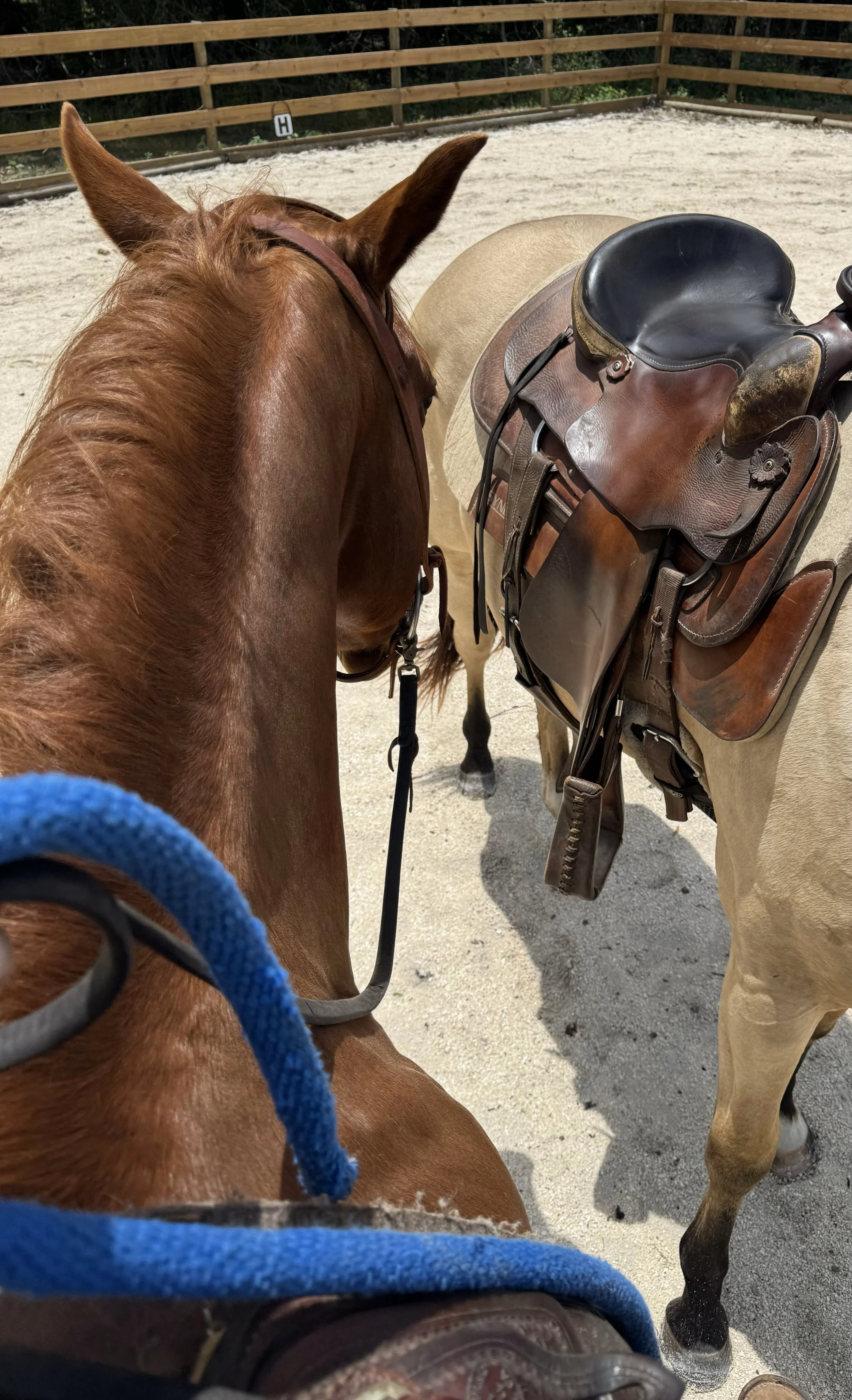Utilizing a pony horse.
While working with young horses and preparing them to be started riding under saddle we often utilize a pony horse. The pony horse helps the young horse in training to demonstrate all of the lessons it has learned throughout the ground working process. To the untrained eye it may appear quite simple as if the young horse is just following the seasoned saddle horse, but when done correctly this is not the case. With the younger experienced horse being led by the saddle horse you can gain control of the horses shoulders that helps him find balance in their turns. You can yield the hindquarters also know as a turn on the forehand. You will find that you can control the bend of the horse. And the list goes on and on! Working on your techniques through lessons with a ponying a horse, you can gain control of both the horses mind and body entirely!
Before we get any further into our blog post on ponying, lets talk about safety! To safely pony a young horse you want to be cautious about where the horse you are leading is positioned. Positioning the horse to far back on your saddle horse can allow the young horse to switch sides without notice, so we want to be sure to ask the horse to walk up along side our seasoned horse. This positioning gives the horse one place to go and that is forward. Now we want to allow the horse to walk freely forward but not over taking the saddle horse. Too much line will allow the young horse to travel too far forward and block the responses asked of the horse we are riding. This would mean a loss of control. We often like to keep the young horses head at no further forward than our knee as we are riding, and not crowding the saddle horse. Ponying in this position allows you time if the young horse was to try to move off ahead of you, or fall behind to try and escape and pull on your horse.
In the event that the young horse was to pull on your horse you want to put them into a position that you can quickly remove any pressure to encourage the horse to relax. We do this by riding our saddle horse forward even just a step to remove the pressure. As we continue on we want to be sure that we are asking the young horse to maintain position but also be sure that we are giving them enough line to allow them to lower their heads and relax into the session.
Now that we have an understanding of positioning ourselves to stay safe, how we need to increase and lower the pressure to get the horse to respond or relax, lets move on to how we hold our lead line. At Pearson Equine we like to hold our line with an open hand, keeping your thumb upwards towards the sky. This allows the rope to slide through your hand as you make your dally around the saddle horns if you feel it is required to do so. Remember to bring your hand in front of the saddle horn in a counter clockwise direction and depending on what type of saddle horn your equipped with you can decide on how many wraps are adequate to secure the horse you are leading.
We want to be sure that in the ponying lesson that we are not pulling on our young horses. If we need more drive we want to direct energy from our saddle horse towards the young horses hips to increase the drive. The dally is for safely securing the young horse and helping it find the release in pressure if a higher pressure situation arises, then we immediately go back to a slacked lead line and allow for relaxation.
At Pearson Equine we will tell you that not every young horse is ponied before it is ridden. Some horses can be better off working without another horse in the pen, it all depends on the demeanor of the horse in training and your safety. But their are many benefits to ponying young horses aside from gaining control of the horses movements it give the horse real life experiences. The rider is up above, often riding on the left and right sides of the horse, this exposure decreases the pressure from the first ride because it allows the young horse to gain confidence with a rider up about them. It also opens the opportunity for unlimited exposure. As the horses pony well around the riding arena they can be taken out on the trails or around the farm to see the sights. The more real life experience your young horse gains in a relaxed physical and mental state, the better horse you will end up with!
Are you ready to learn how to work your young horse effectively from your seasoned saddle horse? Be sure to reach out if your in need of a helping hand. Just one horse and rider assessment will produce proven results with you and your horse. To schedule your next horse and rider assessment check out the services page. Until next time, happy trails!
